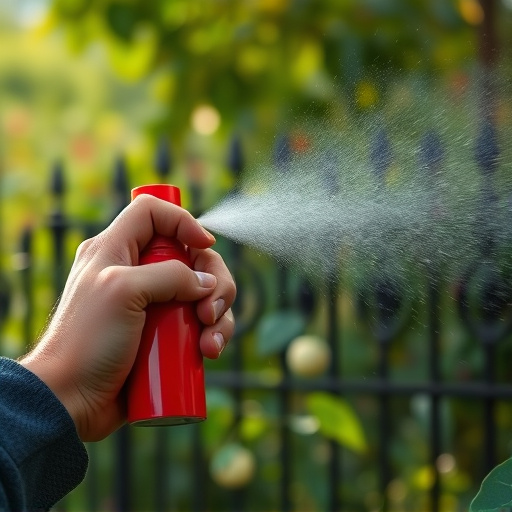Effective tactical pepper spray deployment involves aiming for the face, understanding distance for optimal coverage and blowback prevention, and proper training to ensure safe and reliable use. Selecting the right spray considers personal needs, legal regulations, and accessible carrying options. Regular controlled drills in various scenarios enhance accuracy and responsible usage while adhering to local laws.
Staying safe is paramount, especially in uncertain situations. Pepper spray self-defense weapons have emerged as powerful tools for personal protection. This article guides you through the essentials of tactical pepper spray deployment methods. We’ll explore the science behind its dynamics and effectiveness, helping you choose the right spray for your needs. Learn about masterfully deploying this non-lethal force in various scenarios, ensuring safety with practice drills. Discover expert tips to navigate potential threats effectively.
- Understanding Pepper Spray Dynamics and Effectiveness
- Choosing the Right Tactical Pepper Spray for Your Needs
- Mastering Safe Deployment Techniques and Practice Drills
Understanding Pepper Spray Dynamics and Effectiveness
Pepper spray, a powerful self-defense tool, operates by temporarily incapacitating an assailant through irritation and pain. Understanding its dynamics is crucial for effective deployment. The active ingredient, capsaicin, causes a burning sensation in the eyes, nose, and throat, leading to temporary blindness, coughing, and difficulty breathing. Different pepper spray formulations vary in strength, with higher concentrations offering more protection but also increasing risk of misuse and collateral damage.
Tactical pepper spray deployment methods play a significant role in its effectiveness. Aiming for the face, specifically the eyes and nose, maximizes impact while minimizing the area affected. Distance is key; closer ranges ensure better coverage but increase the risk of blowback, where spray can reflect back onto the user. Practicing proper technique through training sessions enhances safety and ensures pepper spray serves as a reliable tool in self-defense scenarios.
Choosing the Right Tactical Pepper Spray for Your Needs
When selecting a tactical pepper spray, understanding your specific needs is paramount. Consider factors such as range, strength, and deployment method to ensure you’re prepared for various self-defense scenarios. Tactical Pepper Spray Deployment Methods include handhold, holster, or even keychain designs, each offering unique advantages in terms of accessibility and convenience.
Additionally, familiarize yourself with local regulations regarding pepper spray ownership and usage. The right choice will empower you with confidence and peace of mind, knowing you have a reliable tool to protect yourself should the need arise.
Mastering Safe Deployment Techniques and Practice Drills
Mastering safe deployment techniques is key when it comes to tactical pepper spray. It’s not just about having the self-defense weapon; it’s about using it effectively and responsibly. Practice drills in controlled environments to familiarize yourself with the spray’s range, wind effects, and optimal application points. This ensures you can deploy the spray accurately under pressure, maximizing its effectiveness while minimizing collateral damage or unintended exposure.
Regular training sessions should focus on different tactical scenarios, from close-quarters encounters to long-range deterrents. By mastering various deployment methods, you’ll be better equipped to handle unexpected situations. Always prioritize safety and follow local laws regarding pepper spray usage, ensuring your actions are justified and within legal boundaries.
In conclusion, tactical pepper spray deployment methods require a thoughtful balance of understanding its dynamics, choosing the right product for your needs, and mastering safe application techniques. By following the discussed guidelines on pepper spray self-defense weapon safety, individuals can effectively protect themselves while minimizing risk. Remember, proper training and responsible handling are key to ensuring this powerful tool serves its purpose without causing unintended harm.
